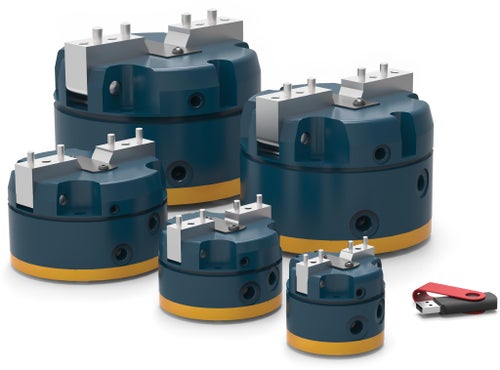Comparing Shielded Vs. Sealed Grippers
Grippers can be designed to function effectively in any type of operating environment, with many environments falling into either the “dirty/contaminated” or “clean room” category. Depending on the operation, the gripper’s components, the production surroundings, or both, will need to be protected by standard or custom-designed shields or seals.
The shield or seal must function in a way that it reliably deflects debris away from the gripper mechanism in a dirty environment or helps keep grease and internal contaminants from escaping the gripper into a clean environment.
The need to find the best type of shield or seal to protect the gripper raises the complexity of the selection process, but it is imperative that proper shielding or sealing be identified to avoid any possible malfunctions or breakdowns that will compromise the overall performance of the workholding or pick-and-place system.

DESTACO OFFERS SHIELDED & SEALED PROTECTION OPTIONS FOR ITS PORTFOLIO OF GRIPPERS
Shielded Grippers (RUA, RTH, DPL,DPG,PPC & RPE Series)
- A gripper that is shielded has cover components placed over it that are positioned in close proximity to each other, without touching. This configuration separates the gripper’s internal moving components from the exterior environment, which limits the possibility that performance-affecting dirt or contaminants can enter the interior of the gripper.
- Shields are available in many forms, including formed sheet metal covers, flexible boots/bellows and lip-style wipers. Shields may be part of the gripper’s construction, either as a standard, optional/special offering or they may be added by the user during system integration.
- Proper shield selection also requires the user to note the orientation of the gripper in relation to the direction from which the contaminants will strike it. This will minimize the amount of debris that may contact the shield during operation.
Sealed Grippers (RP, RPS, RPB, DPDL, RPM/RPMC, & FUA Series)
A sealed gripper is protected by a covering that cuts it off entirely from the exterior atmosphere. There are two types of gripper seals available:
- Moving “contact” seals are positioned between the gripper’s active exterior components and the housing where they function as a way to expel any contaminants; this contaminant expulsion means contact-sealed grippers are not meant for use in strict clean-room applications.
- Booted or bellowed seals connect an expanding and contracting impermeable cover that attaches the exterior moving parts to the main body of the gripper; booted/bellowed seals are best used in dirty and wet environments, and are even made for use in submerged applications.
Buna-N (nitrile) is the most common seal material, with Viton® and silicone used in high-temperature applications, and metal seals are available for handling extreme heat and/or contamination.
For more information, please contact our experts or browse our entire line of gripper products!
